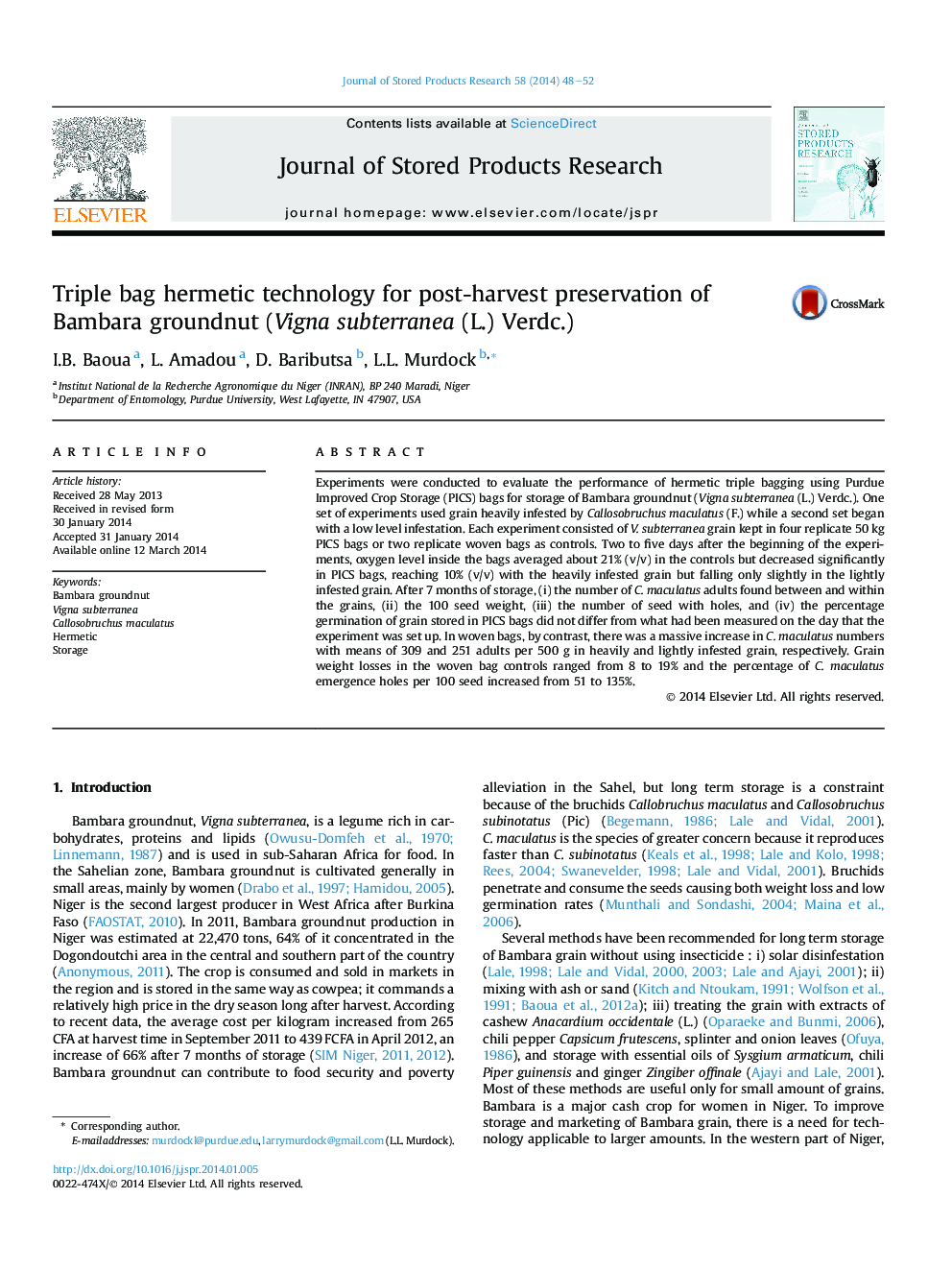| Article ID | Journal | Published Year | Pages | File Type |
|---|---|---|---|---|
| 4517068 | Journal of Stored Products Research | 2014 | 5 Pages |
•Bambara groundnut stored in woven plastic bags was severely damaged by bruchids.•Losses were averted when the grain was stored in triple-layer (PICS) bags.•Both lightly infested and heavily infested Bambara grain was protected.•In infested bagged grain oxygen levels fell and carbon dioxide levels rose.
Experiments were conducted to evaluate the performance of hermetic triple bagging using Purdue Improved Crop Storage (PICS) bags for storage of Bambara groundnut (Vigna subterranea (L.) Verdc.). One set of experiments used grain heavily infested by Callosobruchus maculatus (F.) while a second set began with a low level infestation. Each experiment consisted of V. subterranea grain kept in four replicate 50 kg PICS bags or two replicate woven bags as controls. Two to five days after the beginning of the experiments, oxygen level inside the bags averaged about 21% (v/v) in the controls but decreased significantly in PICS bags, reaching 10% (v/v) with the heavily infested grain but falling only slightly in the lightly infested grain. After 7 months of storage, (i) the number of C. maculatus adults found between and within the grains, (ii) the 100 seed weight, (iii) the number of seed with holes, and (iv) the percentage germination of grain stored in PICS bags did not differ from what had been measured on the day that the experiment was set up. In woven bags, by contrast, there was a massive increase in C. maculatus numbers with means of 309 and 251 adults per 500 g in heavily and lightly infested grain, respectively. Grain weight losses in the woven bag controls ranged from 8 to 19% and the percentage of C. maculatus emergence holes per 100 seed increased from 51 to 135%.
